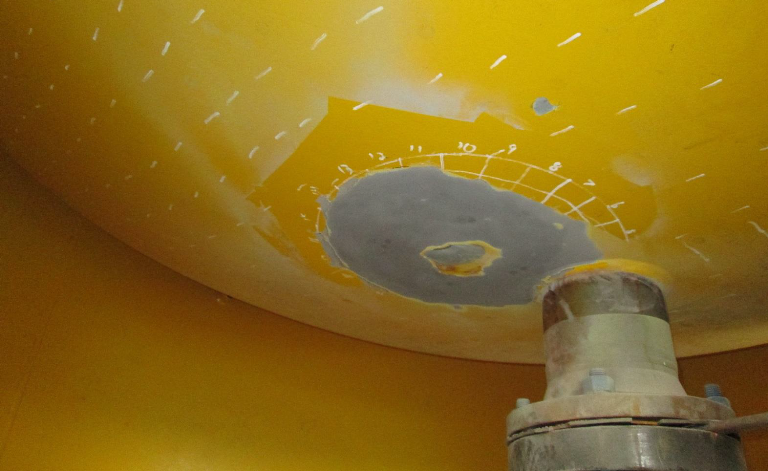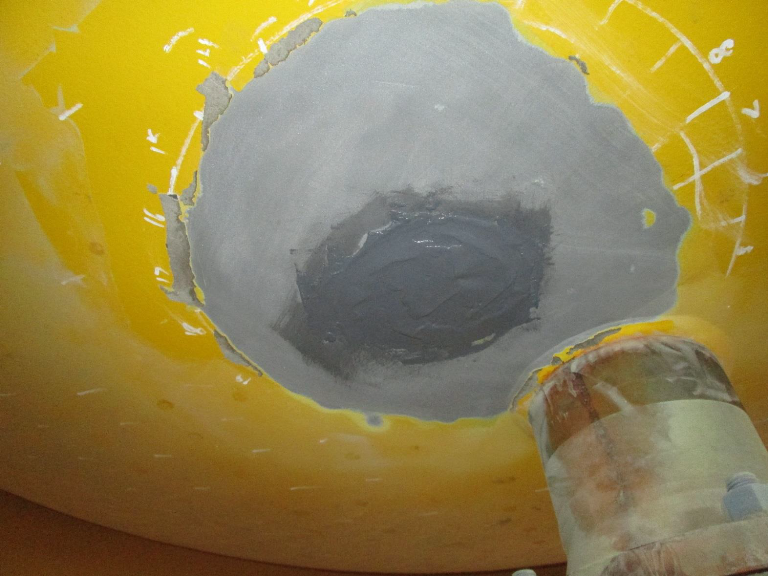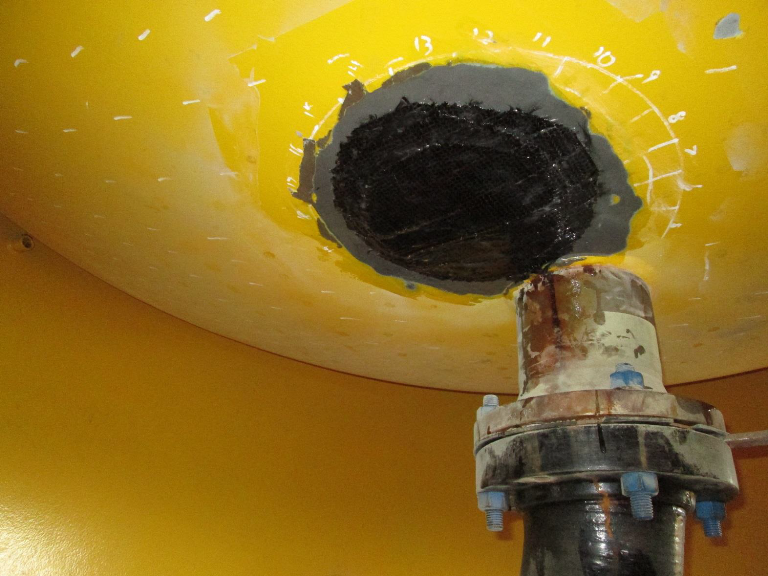In March 2015, an offshore oil and gas platform located in the Gulf of Mexico required a unique solution for the repair of a carbon steel (CS) seawater bulk media filter vessel. The bottom of the vessel had external damage due to the heavily corrosive environment and the seawater being processed. Furthermore, the damage involved a combination of both thin and through-wall defects, which posed a repair dilemma—how to fix the damage without emptying the entire vessel’s contents.
In terms of functionality, seawater bulk media filter vessels simply remove the sediment and grit from seawater pumped up to the platform. As the seawater enters at the top of the vessel, it passes through the bulk media, leaving the unwanted remains trapped in the beads of the filtering media. Subsequently, the clean liquid is collected, drained, and used for many onboard and off board procedures.
Suspended particles in the seawater cause continuous abrasion to the vessel lining that can create an extremely destructive environment when combined with salt water, which is highly corrosive. In this instance, the combination caused the vessel to leak due to a failure with the underdrain system. Consequently, the asset owner decided to use a bolt to arrest the leak until a permanent compliant solution was implemented. Following an investigation of alternatives, the owner decided to use SuperWrap II† from Belzona Polymerics, Ltd. (Harrogate, United Kingdom) to complete the repair. The wrap, a composite repair system engineered as an alternative to replacing defective metallic substrates, consists of a fluid grade resin system, a custom hybrid reinforcement sheet based on fiberglass and carbon fiber, and a release film that consolidates and finishes the application. A composite wrap was chosen because of its application versatility and proven efficiency when repairing weakened and breeched tank walls, as well as the long design life and overall ease of the repair process vs. traditional welding methods, which can incur a number of health and safety issues.
The repair, supported by an engineered design application, was carried out in compliance with ASME standards. At the outset, the bolt plugging the hole was removed, allowing the remainder of the filtered water to be drained and complete access to the damaged area.

The through-wall defect was then plugged using a two-part repair composite for metal repair and resurfacing comprised of solvent-free epoxy resin reinforced with silicon steel alloy. The malleable epoxy compound was shaped to fit the affected area. The compound, which is highly adhesive and water resistant, provided a temporary solution for stopping the vessel’s leak. The original vessel coating was then removed by hand-sanding, and thin and through-wall areas of the CS substrate were rebuilt with a two-part surface tolerant epoxy composite. Designed to adhere to wet, oil contaminated, and underwater substrates, this material was deemed a suitable repair solution for the aqueous environment.

Following the wall repair, the substrate was then cleaned by abrasive blasting to meet the requirements of NACE No. 2/SSPC-SP 10.1 Three applications (six layers) of the wrap repair system were then applied to the damaged area to reinforce the bottom of the filter vessel. Epoxy resin was used to create a mold of the vessel’s surface, and the wrap repair was consolidated by applying pressure against the template, creating a secure and tight seal around the defect.

By using the composite wrap repair system, the asset owner was able to avoid emptying the entire vessel, including filter media, and save a considerable amount of downtime and labor.
Source: Belzona Polymerics, Ltd., belzona.com. Contact Tom Belli, Belzona—e-mail: tbelli@belzona.com.
†Trade name.
Reference
1 NACE No. 2/SSPC-SP 10, “Near-White Metal Blast Cleaning” (Houston, TX: NACE International).